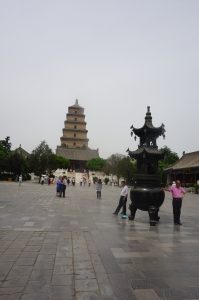 Dacien Temple and Big Wild Goose Pagoda are favorite spots for the trip to Xi’an. It is close to the Shaanxi History Museum. It is recommended to visit them at the same day. The transportation is convenient. You can check the bus line on the Gaode map. The temple is inside the Pagoda, and you need buy the ticket for the temple first, then you can enter into the Pagoda. After entering, you can choose to spend 50 yuan for a lecturer as needed. Or you can just walk slowly to view the scenery inside. You can enter every room and look at it carefully and you will get a lot of rewards. Most of the travelers there especially like the stories about the Sakyamuni and Xuan Zang Masters. You can see the Big Wild Goose Pagoda soon, but you need spend 30 yuan to buy a ticket to climb the tower. If you don’t have a commentator, you can scan WeChat and listen to the electronic voice commentary.
Dacien Temple and Big Wild Goose Pagoda are favorite spots for the trip to Xi’an. It is close to the Shaanxi History Museum. It is recommended to visit them at the same day. The transportation is convenient. You can check the bus line on the Gaode map. The temple is inside the Pagoda, and you need buy the ticket for the temple first, then you can enter into the Pagoda. After entering, you can choose to spend 50 yuan for a lecturer as needed. Or you can just walk slowly to view the scenery inside. You can enter every room and look at it carefully and you will get a lot of rewards. Most of the travelers there especially like the stories about the Sakyamuni and Xuan Zang Masters. You can see the Big Wild Goose Pagoda soon, but you need spend 30 yuan to buy a ticket to climb the tower. If you don’t have a commentator, you can scan WeChat and listen to the electronic voice commentary.
The Big Wild Goose Pagoda was built by the Xuan Zang Master after he recovered the true scriptures from India. He asked the court to build it for collecting the scriptures. In the ages, the tower is not able to see the appearance that how many years it looked like, and when you reach the top, you can view the charm of the city. Of course, there are a lot of people. After you go out of the tower and sit under the tower, you will feel the wind blows, and you can hear the sound of the bell on the tower. It is very nice. In short, calm down here and slow down you pace.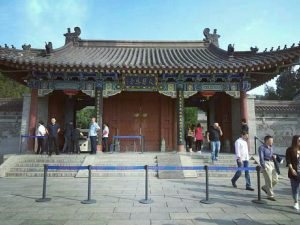
The seven-story tower of the Big Wild Goose Pagoda has a height of 64.52 meters and a base length of 25.5 meters. Now, the Big Wild Goose Pagoda is the landmark building of Xi’an City. There are many tourists, and foreign tourists who have a visit to the Big Wild Goose Pagoda. As the earliest and largest Tang Dynasty square brick tower, the Big Wild Goose Pagoda is a typical material evidence that the ancient Indian Buddhist temples were introduced into the Central Plains and integrated into the Chinese culture. It is also the wisdom of the ancient working people of China.

 Shennong Stream is located in the western border of Hubei Province. It borders Baokang County of Hubei Province in the east, Wushan County in Chongqing in the west, Xingshan, Badong and the Three Gorges in the south, and Fangxian, Zhushan and Wudang in the north. And features the east longitude 109°56′~110°58′, north latitude 31°15′~31°75′, total area 3253 square kilometers, and 5 towns and 3 townships and 1 national forest and wild animal type nature reserve, 1 state-owned forest Enterprise Forestry Administration and 1 National Wetland Park, and the forest land accounts for more than 85%. Shennong Stream was approved by the State Council in 1970 and is directly under the jurisdiction of Hubei Province. It is the only administrative district in China named after the “forest area”.
Shennong Stream is located in the western border of Hubei Province. It borders Baokang County of Hubei Province in the east, Wushan County in Chongqing in the west, Xingshan, Badong and the Three Gorges in the south, and Fangxian, Zhushan and Wudang in the north. And features the east longitude 109°56′~110°58′, north latitude 31°15′~31°75′, total area 3253 square kilometers, and 5 towns and 3 townships and 1 national forest and wild animal type nature reserve, 1 state-owned forest Enterprise Forestry Administration and 1 National Wetland Park, and the forest land accounts for more than 85%. Shennong Stream was approved by the State Council in 1970 and is directly under the jurisdiction of Hubei Province. It is the only administrative district in China named after the “forest area”.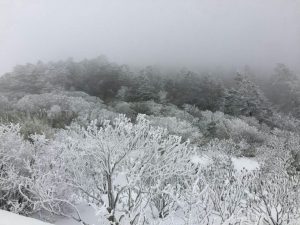 Special reminder: you must bring your clothes to keep warm when you come to the Shennong Stream. The air here is pure, the weather on the mountain is about ten degrees all year round. A mountain, from the mountain to the mountain, let you feel four seasons all year round. And if you like enjoying natural scenery, the Shennong Stream is an ideal scenic spot for you to have a visit. You will enjoy the environment there.
Special reminder: you must bring your clothes to keep warm when you come to the Shennong Stream. The air here is pure, the weather on the mountain is about ten degrees all year round. A mountain, from the mountain to the mountain, let you feel four seasons all year round. And if you like enjoying natural scenery, the Shennong Stream is an ideal scenic spot for you to have a visit. You will enjoy the environment there.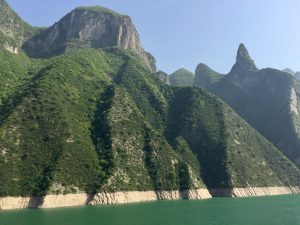 Wu Gorge is the most coherent and neat gorge in the Three Gorges. It is divided into east and west sections. The western section is composed of Jinkui Yinjia Gorge and Jianchuan Gorge. The eastern section is composed of Tie Guan Gorge and Menshan Gorge. The famous 12 peaks of Wushan are located on both banks, with each six peaks in the north and south. The twelve peaks are picturesque and full of gestures, which is the essence of the Wu Gorge. Among the twelve peaks, the goddess peak is the most famous. However, if you visit the Wu Gorge by boat, you can only see nine peaks. And you must disembark if you want to see the Shangsheng peak, Qiyun Peak, and Jingtan Peak, and they can be seen only near the Qingshi Town.
Wu Gorge is the most coherent and neat gorge in the Three Gorges. It is divided into east and west sections. The western section is composed of Jinkui Yinjia Gorge and Jianchuan Gorge. The eastern section is composed of Tie Guan Gorge and Menshan Gorge. The famous 12 peaks of Wushan are located on both banks, with each six peaks in the north and south. The twelve peaks are picturesque and full of gestures, which is the essence of the Wu Gorge. Among the twelve peaks, the goddess peak is the most famous. However, if you visit the Wu Gorge by boat, you can only see nine peaks. And you must disembark if you want to see the Shangsheng peak, Qiyun Peak, and Jingtan Peak, and they can be seen only near the Qingshi Town.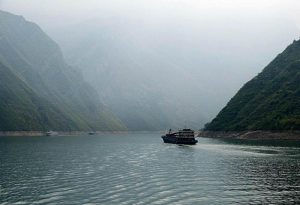
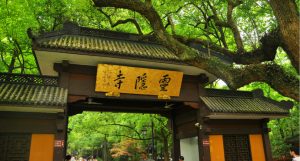 Adjacent to the West Lake, LingYin Temple is one of the earliest Buddhist monasteries in China and one of China’s top ten ancient temples, which is retaining many fine cultural relics of various dynasties. It has collected a lot of Treasures in the Temple: The “Yunlin Temple” horizontal inscribed board hanging on the Hall of Heavenly Kings is titled by Emperor Kangxi of Qing Dynasty; the Daxiong Hall is dedicated to the statue of Sakyamuni in the largest woodcarving Buddha statue in China. There are Buddhist relics in the temple, such as the ancient Beiye scriptures, and the Ming Dynasty’s writings of Diamond Sutra. There are many fantastic and varied caves on the mountain. There are more than 340 Buddhist statues in the five generations. It is a rare ancient stone art treasure in Jiangnan. Here is the birthplace of Jigong. It is said that the wish here is very effective, and the pilgrims who come to worship the Buddha every day are so a lot.
Adjacent to the West Lake, LingYin Temple is one of the earliest Buddhist monasteries in China and one of China’s top ten ancient temples, which is retaining many fine cultural relics of various dynasties. It has collected a lot of Treasures in the Temple: The “Yunlin Temple” horizontal inscribed board hanging on the Hall of Heavenly Kings is titled by Emperor Kangxi of Qing Dynasty; the Daxiong Hall is dedicated to the statue of Sakyamuni in the largest woodcarving Buddha statue in China. There are Buddhist relics in the temple, such as the ancient Beiye scriptures, and the Ming Dynasty’s writings of Diamond Sutra. There are many fantastic and varied caves on the mountain. There are more than 340 Buddhist statues in the five generations. It is a rare ancient stone art treasure in Jiangnan. Here is the birthplace of Jigong. It is said that the wish here is very effective, and the pilgrims who come to worship the Buddha every day are so a lot.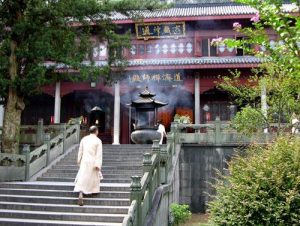 Tips: during Buddha’s birthday, national holidays, the Linyin Temple will be open 30 minutes in advance in the morning.
Tips: during Buddha’s birthday, national holidays, the Linyin Temple will be open 30 minutes in advance in the morning.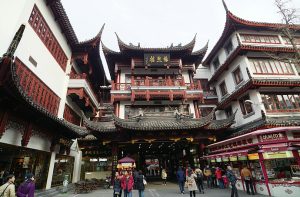 Old City God Temple is located in the center of Shanghai. It reflects the customs of Shanghai people.
Old City God Temple is located in the center of Shanghai. It reflects the customs of Shanghai people.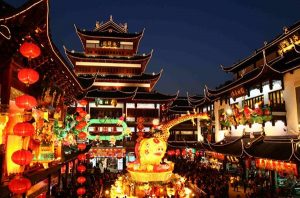
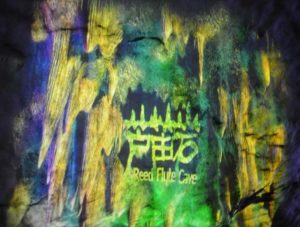 Reed Flute Cave is a cave that is not very large in size, but the layout of the inside is very classic. There are many caves in Guilin. It is said that after viewing the caves in Guilin, you don’t have to look at other caves in other places. Reed Flute Cave is in Guilin City. However, most people feel that the caves here and there are almost the same, in addition to admire the wonders of nature, what requires the most is the imagination. When you come there, if you are lucky, there aren’t many people. And you can also have a guide to explain all the way. It is very funny. The light in the cave is very dark, and it is fine to shoot the scene. But it is easy to shoot a black face when you shoot people. Of course, if the photography technology is powerful, you can ignore it.
Reed Flute Cave is a cave that is not very large in size, but the layout of the inside is very classic. There are many caves in Guilin. It is said that after viewing the caves in Guilin, you don’t have to look at other caves in other places. Reed Flute Cave is in Guilin City. However, most people feel that the caves here and there are almost the same, in addition to admire the wonders of nature, what requires the most is the imagination. When you come there, if you are lucky, there aren’t many people. And you can also have a guide to explain all the way. It is very funny. The light in the cave is very dark, and it is fine to shoot the scene. But it is easy to shoot a black face when you shoot people. Of course, if the photography technology is powerful, you can ignore it.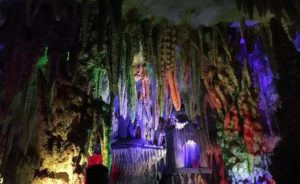 The interior of Reed Flute is very good, like a colorful kingdom, the interior of the stalactite cave is strange, with the rock formations, and the special effects dance and special effects animation show. It is not far away from the Guilin city center. When you make a tour to Guilin, you can also buy the ticket package. In this way, you can visit all the attractions in downtown Guilin within a few days, including Diecai Mountain, Fubo Mountain, Reed Flute Cave, Elephant Trunk Hill and Seven Star Park.
The interior of Reed Flute is very good, like a colorful kingdom, the interior of the stalactite cave is strange, with the rock formations, and the special effects dance and special effects animation show. It is not far away from the Guilin city center. When you make a tour to Guilin, you can also buy the ticket package. In this way, you can visit all the attractions in downtown Guilin within a few days, including Diecai Mountain, Fubo Mountain, Reed Flute Cave, Elephant Trunk Hill and Seven Star Park.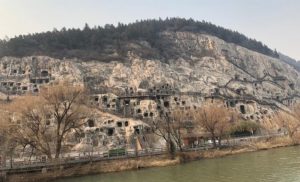 Compared with Yungang Grottoes and Mogao Grottoes, the biggest feature of Longmen Grottoes should be that it is regarded as the royal Grottoes of the Tang Dynasty. In particular, the statue of the Lushena Buddha made by Wu Zetian is full and round, with a wavy hairline on the top of the head, and double brows like a new moon, which are attached to a pair of clear eyes, and are gazing slightly below. Featuring high straight nose and small mouth, it is showing a peaceful smile. Both ears are long and slightly sag, and the lower jaw is round and slightly forward, to make it harmonious. Standing under the image of Buddha, you will feel calm and gentle.
Compared with Yungang Grottoes and Mogao Grottoes, the biggest feature of Longmen Grottoes should be that it is regarded as the royal Grottoes of the Tang Dynasty. In particular, the statue of the Lushena Buddha made by Wu Zetian is full and round, with a wavy hairline on the top of the head, and double brows like a new moon, which are attached to a pair of clear eyes, and are gazing slightly below. Featuring high straight nose and small mouth, it is showing a peaceful smile. Both ears are long and slightly sag, and the lower jaw is round and slightly forward, to make it harmonious. Standing under the image of Buddha, you will feel calm and gentle.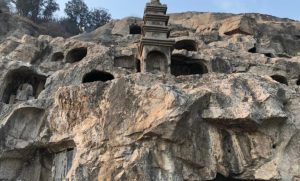
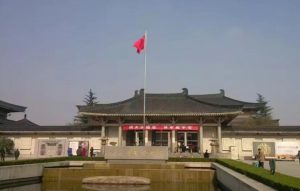 After entering the museum, you will first come to the first exhibition hall, which mainly talks about the primitive era. Listening to the explanation, you will see a lot of chic pottery in beautiful shapes, and a variety of production tools. Then it will be the exhibition hall of Qin, and follow by the exhibition hall of the Han Dynasty. And there are Vatan and Han tomb figures in the hall. The Jade Cicada inside is usually made of the Xinjiang jade, which is pure and free of impurities, crystal and clear.
After entering the museum, you will first come to the first exhibition hall, which mainly talks about the primitive era. Listening to the explanation, you will see a lot of chic pottery in beautiful shapes, and a variety of production tools. Then it will be the exhibition hall of Qin, and follow by the exhibition hall of the Han Dynasty. And there are Vatan and Han tomb figures in the hall. The Jade Cicada inside is usually made of the Xinjiang jade, which is pure and free of impurities, crystal and clear.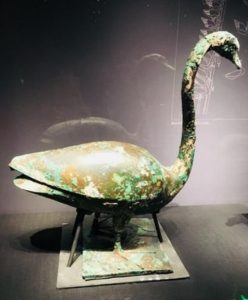
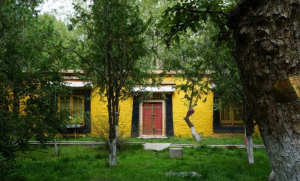 Norbulingka is located on the west side of the Potala Palace. It was built in the 1840s (Dalai VII) and is a place where the Dalai Lama has spent the summer there to deal with government affairs (it is called summer palace). It is a typical Tibetan style garden. The Norbulingka is quite large and covers an area of 360,000 square meters. It consists of several groups of palace buildings, such as Gesangpozhang, Jinse Pozhang, and Dadan Mingjiuzhang. Among them, the Cuoji Pozhang (Huxin Pavilion) is the most beautiful scenic spot in the Norbulingka. “Da Dan Ming Wen Pozhang” is the new palace of the 14th Dalai Lama. The Tibetan language means “the eternal palace.” It is truly magnificent, and full of flowers! However, photographs are not allowed inside the palace. There are many Thangkas and countless treasures, and one of the gold thrones made of pure gold is staggering!
Norbulingka is located on the west side of the Potala Palace. It was built in the 1840s (Dalai VII) and is a place where the Dalai Lama has spent the summer there to deal with government affairs (it is called summer palace). It is a typical Tibetan style garden. The Norbulingka is quite large and covers an area of 360,000 square meters. It consists of several groups of palace buildings, such as Gesangpozhang, Jinse Pozhang, and Dadan Mingjiuzhang. Among them, the Cuoji Pozhang (Huxin Pavilion) is the most beautiful scenic spot in the Norbulingka. “Da Dan Ming Wen Pozhang” is the new palace of the 14th Dalai Lama. The Tibetan language means “the eternal palace.” It is truly magnificent, and full of flowers! However, photographs are not allowed inside the palace. There are many Thangkas and countless treasures, and one of the gold thrones made of pure gold is staggering!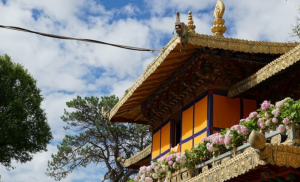
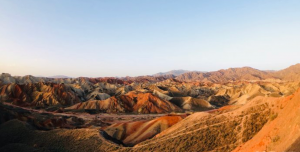 Zhangye Danxia National Geological Park is the only Danxia landform and colored hill complex in China. It is rated as one of the seven most beautiful Danxia landforms in China by China National Geographic. It mainly consists of two scenic spots, Bingou Danxia and Qicai Danxia, which are composed of red gravel, sandstone and mudstone. The unique hilly hills are colorful and magnificent. This is also the location of Zhang Yimou’s “Three Guns Surprise”, Jiang Wen’s “The Sun Also Rises” and the TV series “Detective Di Renjie”. In addition, it is also a paradise for photographers. In the scenic area, many photographers are shooting around with big cameras. If you still visit it the next day, when you buy the ticket, do remember tell the ticket seller that you should cover the seal of the next day, otherwise you will need to buy the ticket again the next day.
Zhangye Danxia National Geological Park is the only Danxia landform and colored hill complex in China. It is rated as one of the seven most beautiful Danxia landforms in China by China National Geographic. It mainly consists of two scenic spots, Bingou Danxia and Qicai Danxia, which are composed of red gravel, sandstone and mudstone. The unique hilly hills are colorful and magnificent. This is also the location of Zhang Yimou’s “Three Guns Surprise”, Jiang Wen’s “The Sun Also Rises” and the TV series “Detective Di Renjie”. In addition, it is also a paradise for photographers. In the scenic area, many photographers are shooting around with big cameras. If you still visit it the next day, when you buy the ticket, do remember tell the ticket seller that you should cover the seal of the next day, otherwise you will need to buy the ticket again the next day.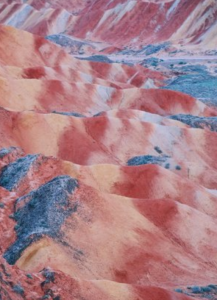 Opening hours:
Opening hours: